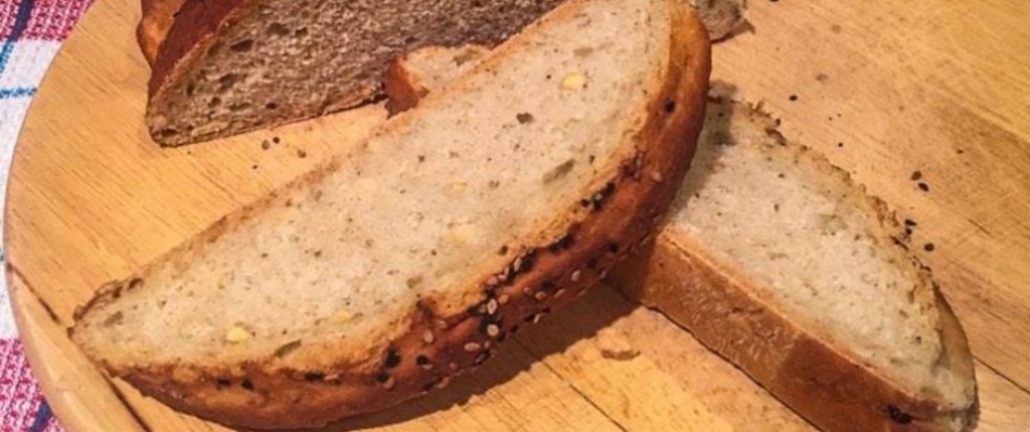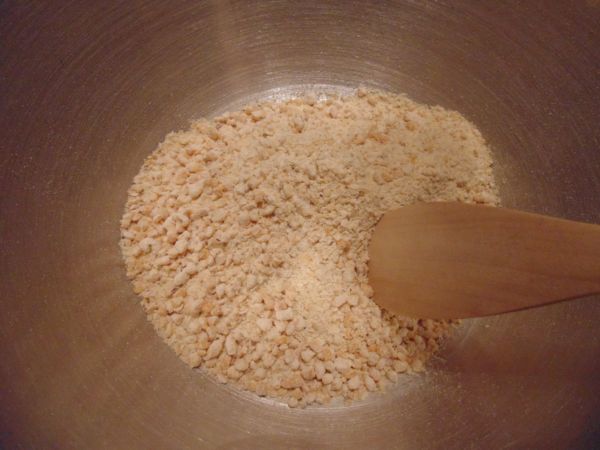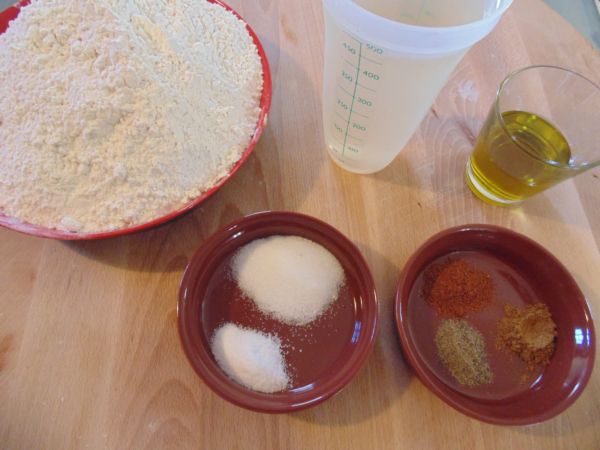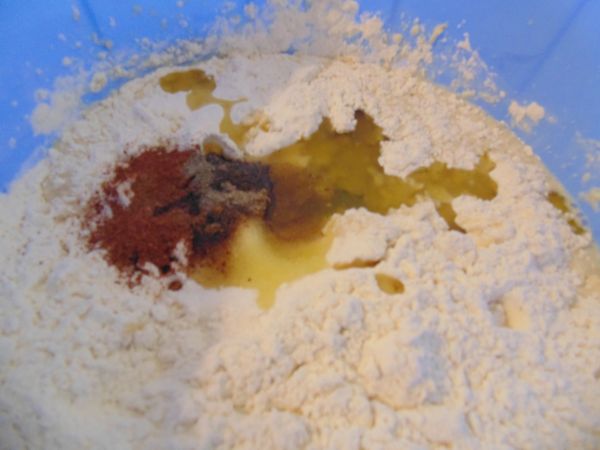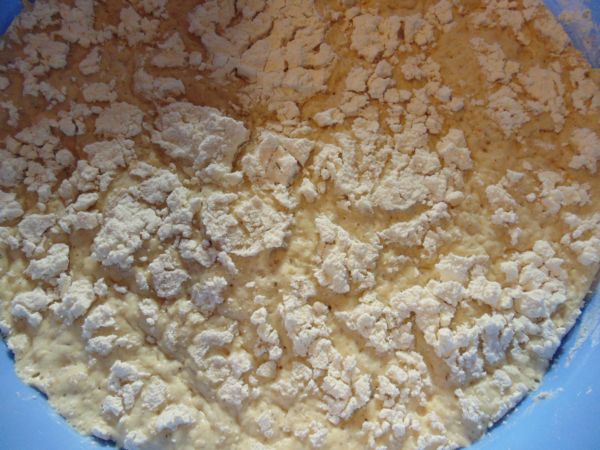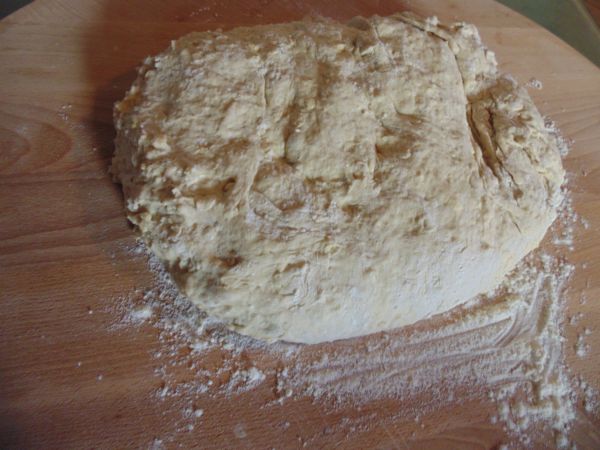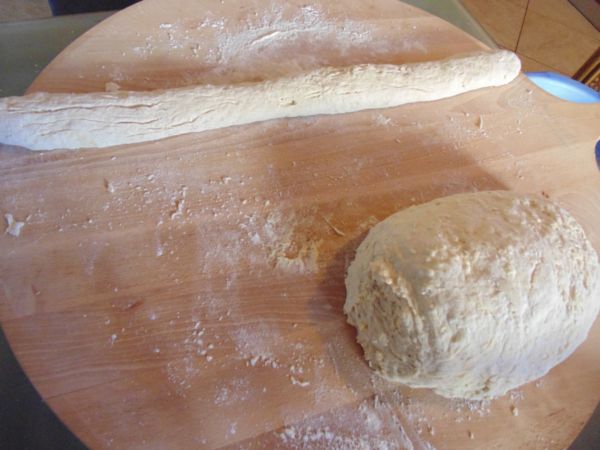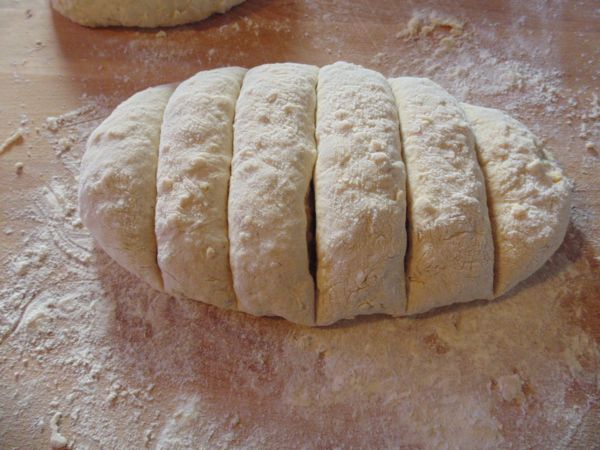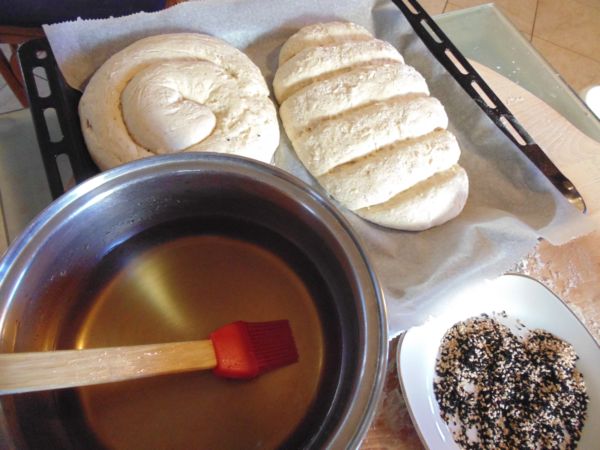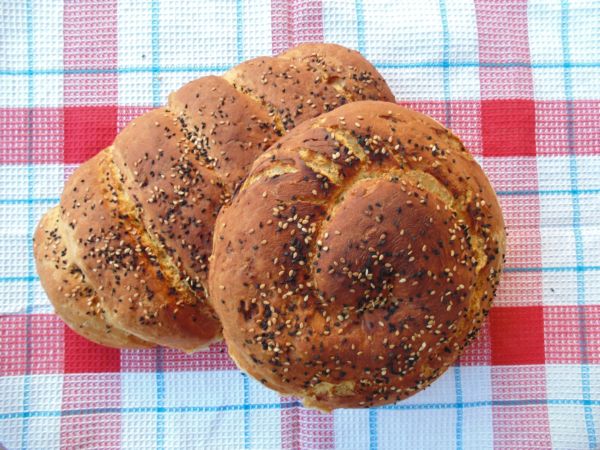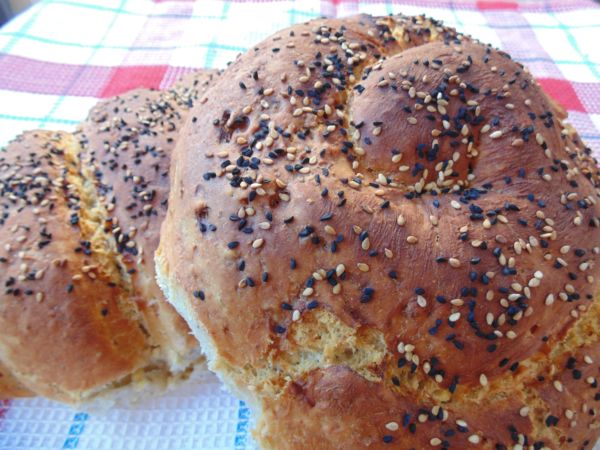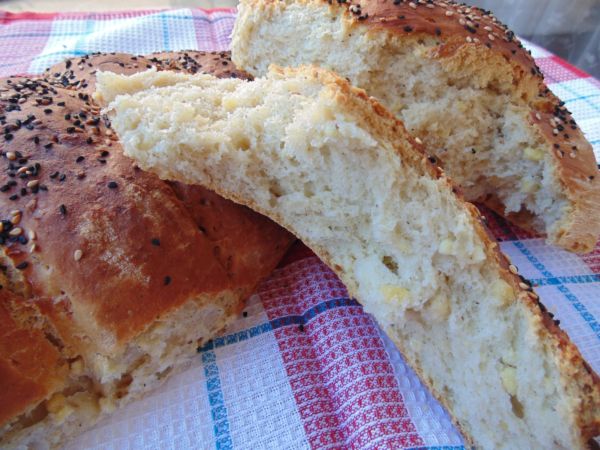‘EFTAZYMO’ (CHICKPEA FLOUR SOURDOUGH BREAD)
-
This chickpea flour sourdough is traditionally made in a bronze or clay bowl which was usually used to drink water or wine. A clay pot is preferential because it has the advantage of having a constant temperature and maintaining it for a long time.
There are countless references and superstitions about this bread. It’s also known as ‘Devil Bread’ because it does not contain sacred yeast. People also say that it’s very sensitive to the ‘bad eye’ (bad luck) and when the old women were making this bread they were alone and didn't tell anyone what they were doing so that no one could give it the ‘bad eye’. They did various unbelievable things so that no one would find out. Some burned incense, while others even burned car tires so their bread would not be smelled in the neighborhood. They even made sure that they were clean on the day they were kneading. But all this should not prevent you from making this wonderful bread, which, while may seem difficult to make, is not actually. All you need is time. Try it and you will be thrilled…Ingredients:
2 ½ kg of flour (all purpose or half wheat)
1 L of water
500 g chickpeas (chopped or chickpea flour)
150 ml of olive oil
150 g sugar
7 bay leaves
2 cup Salt
1 cup Pepper
1 cup Cumin
1 cup AniseFor the sugar water:
200 ml of water
2 cup sugar
Black and white sesame seeds for sprinkling.Method:
Boil the water with the bay leaves for about 5 minutes. Allow to cool slightly.
Take the chickpeas, lightly chop them in a mortar and then transfer them to the blender. (We do this because the chickpeas could break the blender unless you have a very strong one. We can also use chickpea flour and avoid the whole process but believe me, it won't be the same. It's great to feel the chickpeas in the bread.)
Mix the chickpeas in the half warm water with laurel leaves so that you have a porridge-like consistency and put it in a well-closed container to maintain the temperature. Stir and leave in a warm place for about 8 hours. Do this process in the evening so that by the morning it is ready. Also wrap it with a blanket if the atmosphere is cold. This thick porridge was called "rotten" by the old housewives.
When ready, the dough must have swollen and have a rather repulsive smell.
In a bowl, put 1 1/2 kg of flour. Make a hole and drop in the dough. Start kneading gently (as they say, we should ‘sweeten’ it, with gentle circular motions) then pour in the remaining water, oil, sugar and spices (except the salt). Sprinkle with flour and leave to rise for about 2 hours. After it has risen, knead with the remaining flour and add the salt. In this part of the process, do not add water at all. You may not need all the flour or you may need to add a little more. You need a soft and supple dough. Allow to rest for half an hour and then roll out the bread. You can make a string of dough and then mold it into rounds or make loaves that you should score on top with a knife quite deeply.
Make the sugar water, stir in the lukewarm sugar, spread it on top of the breads and then sprinkle with black and white sesame on top.
Place the bread on a baking tray and cover for about an hour.
Bake in preheated oven at 190 - 200 degrees for about 20 minutes and then lower to 170 degrees for another half hour.
Good luck!!!



